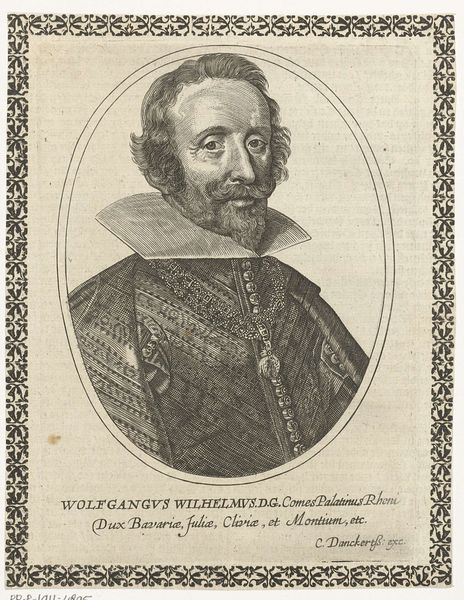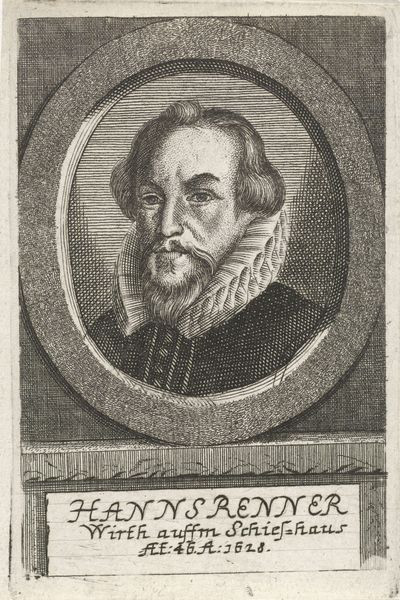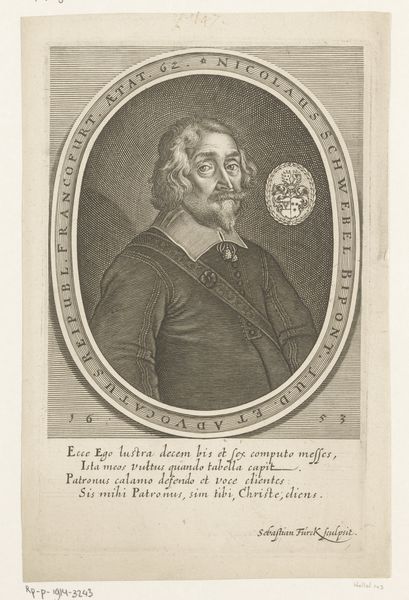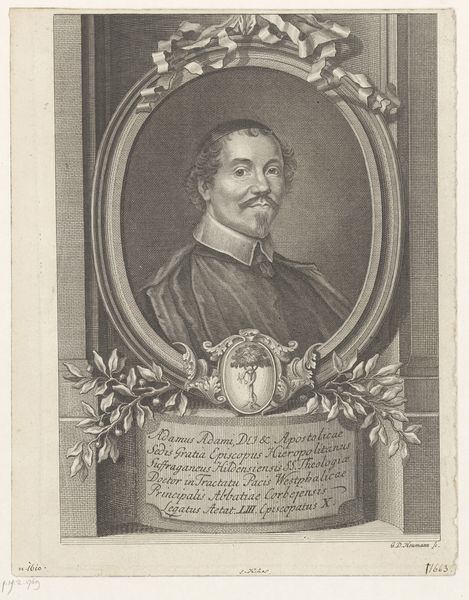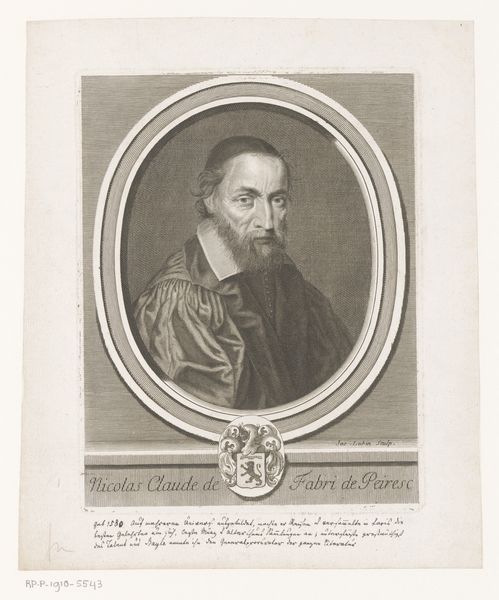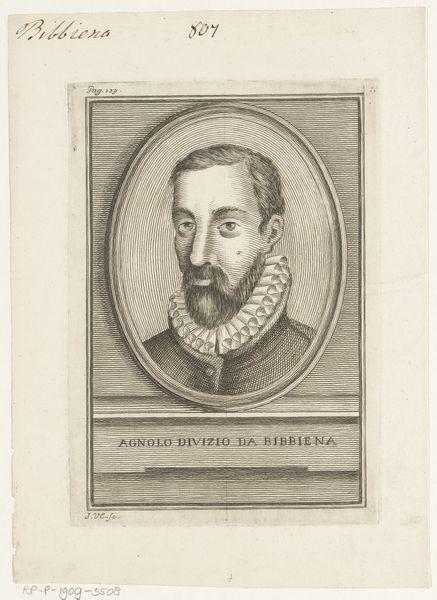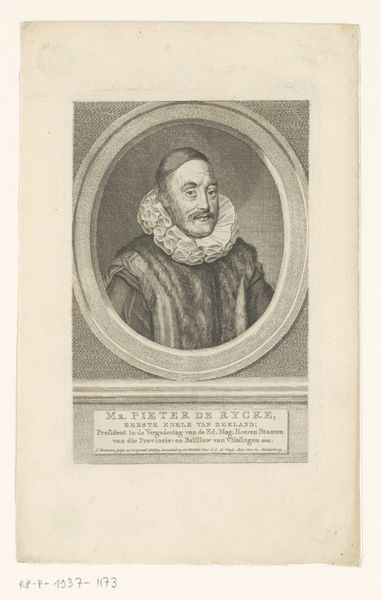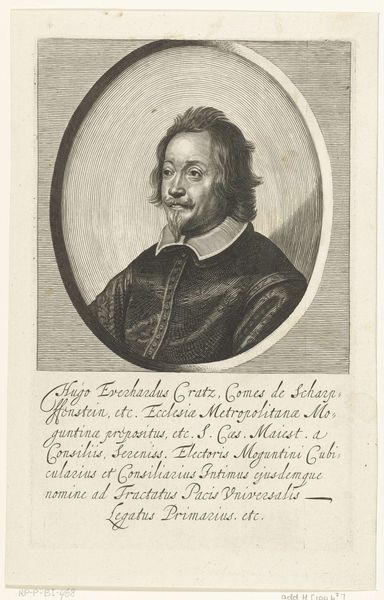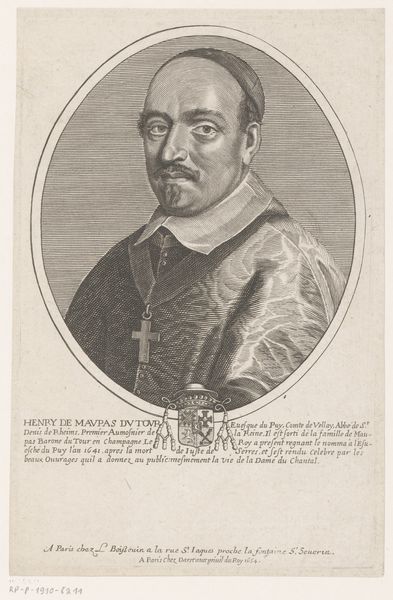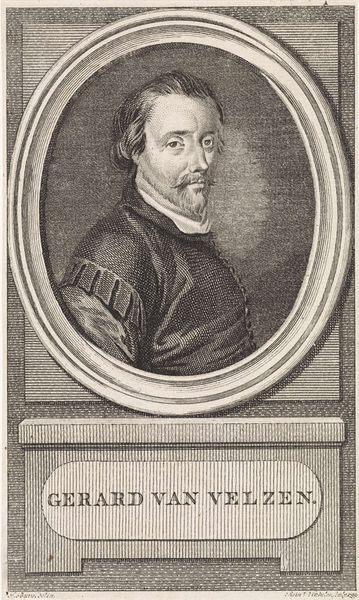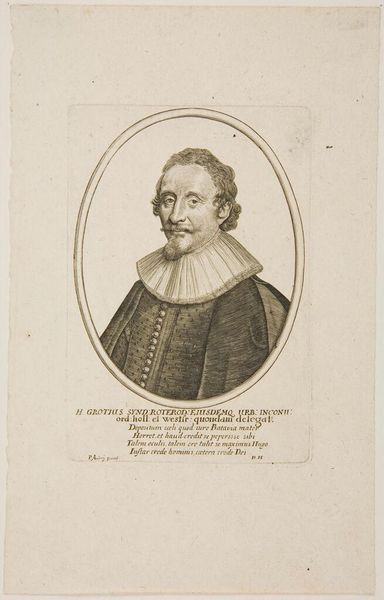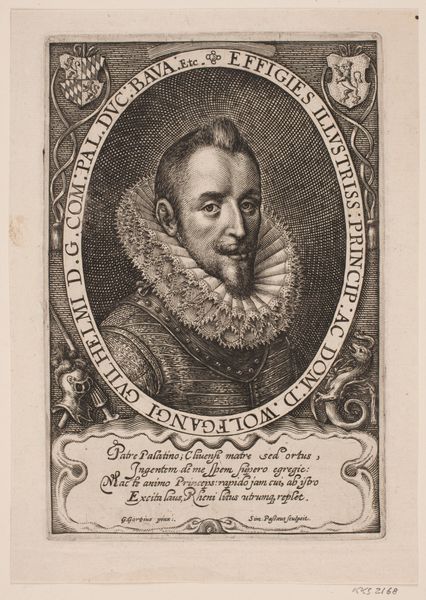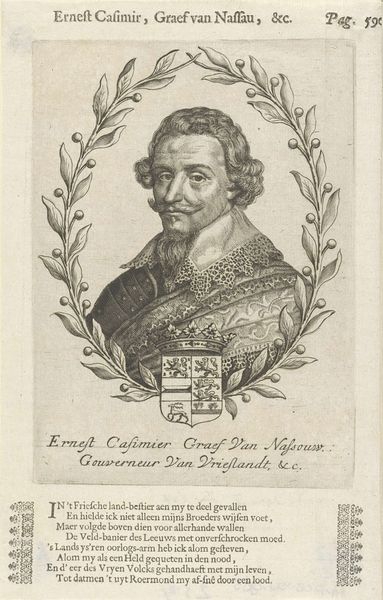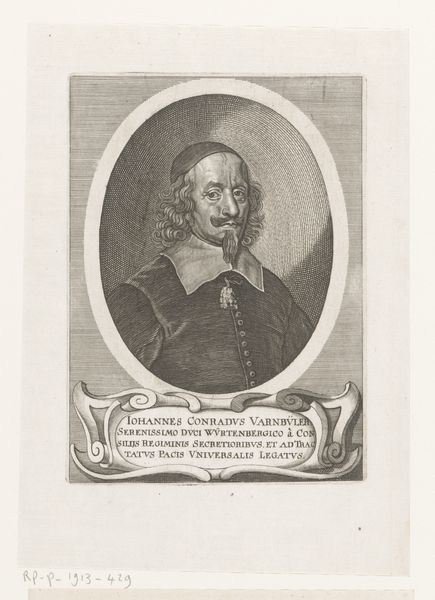
print, engraving
#
portrait
#
baroque
# print
#
history-painting
#
engraving
Dimensions: height 194 mm, width 128 mm
Copyright: Rijks Museum: Open Domain
Editor: So, here we have a print, an engraving, titled "Portret van Charles de Montchal" made sometime between 1652 and 1656 by Pierre Daret, currently at the Rijksmuseum. It feels very formal and symbolic. What sort of significance do you see in a piece like this? Curator: Ah, indeed! Observe the sitter, Charles de Montchal. The symbols that frame him—his clerical garments, the coat of arms— speak volumes. Notice the cross pendant. These aren't just decorative; they're visual cues, loaded with cultural weight. They tie him to religious authority, embedding him within a specific historical and social hierarchy. The oval frame around the portrait further suggests a venerated space, almost like a saint's icon. Editor: So, it's not just about him as an individual, but more about his role and status? Curator: Precisely! Daret isn't just capturing a likeness. He’s carefully constructing an image of power and piety meant to resonate with viewers familiar with these visual languages. Consider the gaze; it's direct, intended to convey confidence and perhaps even a sense of moral authority. It would resonate profoundly in its time, wouldn't you agree? Editor: Definitely. The choice of engraving, too. It allowed for wider distribution, further amplifying the message. I suppose it was all very meticulously planned to portray a certain message. Curator: Indeed! Each element coalesces to create a carefully constructed and impactful image that served as an effective statement for Montchal’s power and place within his cultural moment. These aren't just artistic choices; they reflect deep-seated cultural beliefs about leadership and faith. Editor: This was very insightful! I had no idea there were so many layers behind what appears as a standard portrait. Curator: My pleasure! Understanding visual codes helps us decode not only the artwork but also the world it inhabited.
Comments
No comments
Be the first to comment and join the conversation on the ultimate creative platform.
